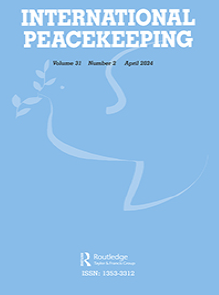Kelsey L. Larsen and Elizabeth A. Stanley. (2024). “How Stress, Trauma, and Emotion May Shape Post-Conflict Environments—With Implication for International Peacekeeping.” International Peacekeeping, vol. 31, no. 3: 332-359. https://doi.org/10.1080/13533312.2024.2321434
Abstract:
Recent research on post-conflict environments prioritizes more creative understandings of peace operations, leading researchers to dig deeper into the micro-foundations of peacebuilding and peacekeeping. Though some of this research highlights the role of emotions, there are several complexifying factors that interact with emotion – including chronic stress arousal, trauma, increased stress loads, stress and emotion contagion, and decreased self-regulatory capacity – that remain dramatically undertheorized in this new wave of research. Given that peacekeeping operations are an environment in which these factors are likely to be at their most salient, it is essential that we understand where and how they interact with those operations. This article seeks to address this oversight. It begins by integrating recent psychological and neuroscientific arguments about individuals’ neurobiological windows of tolerance, exploring how the conflict cycle can lead to post-conflict effects on individuals’ thoughts, emotions, decision-making, and behavior. It then explores the implications of those lessons for two dimensions of peacekeeping environments, offering insight into peacekeepers’ dysregulation as well as structurally and socially embedded dysregulation within the host population. Most importantly, it offers recommendations for how to resolve the effects of stress and trauma in peacekeeping environments, and thus provide the healing needed for effective peacekeeping.
